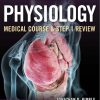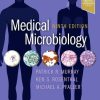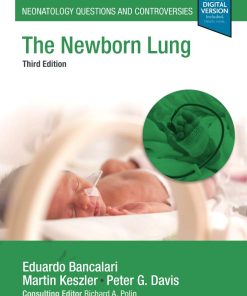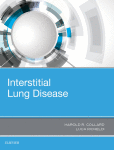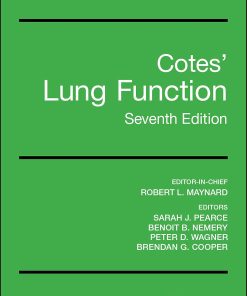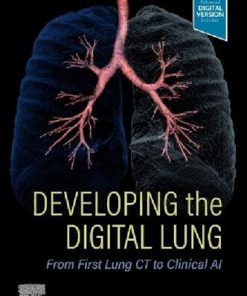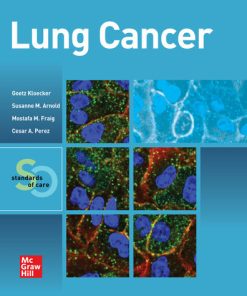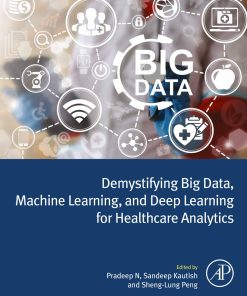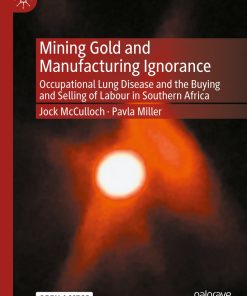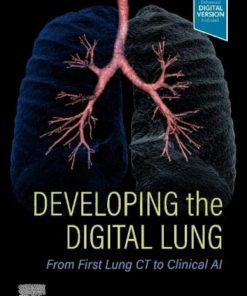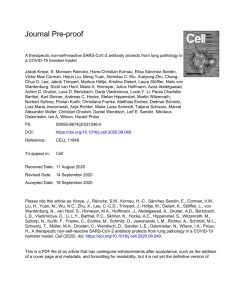(Ebook PDF) 3D Lung Models for Regenerating Lung Tissue 1st edition by Gunilla Westergren Thorsson, Sara Enes 0323908721 9780323908726 full chapters
$50.00 Original price was: $50.00.$25.00Current price is: $25.00.
3D Lung Models for Regenerating Lung Tissue 1st edition by Gunilla Westergren-Thorsson, Sara Enes – Ebook PDF Instant Download/DeliveryISBN: 0323908721, 9780323908726
Full download 3D Lung Models for Regenerating Lung Tissue 1st edition after payment
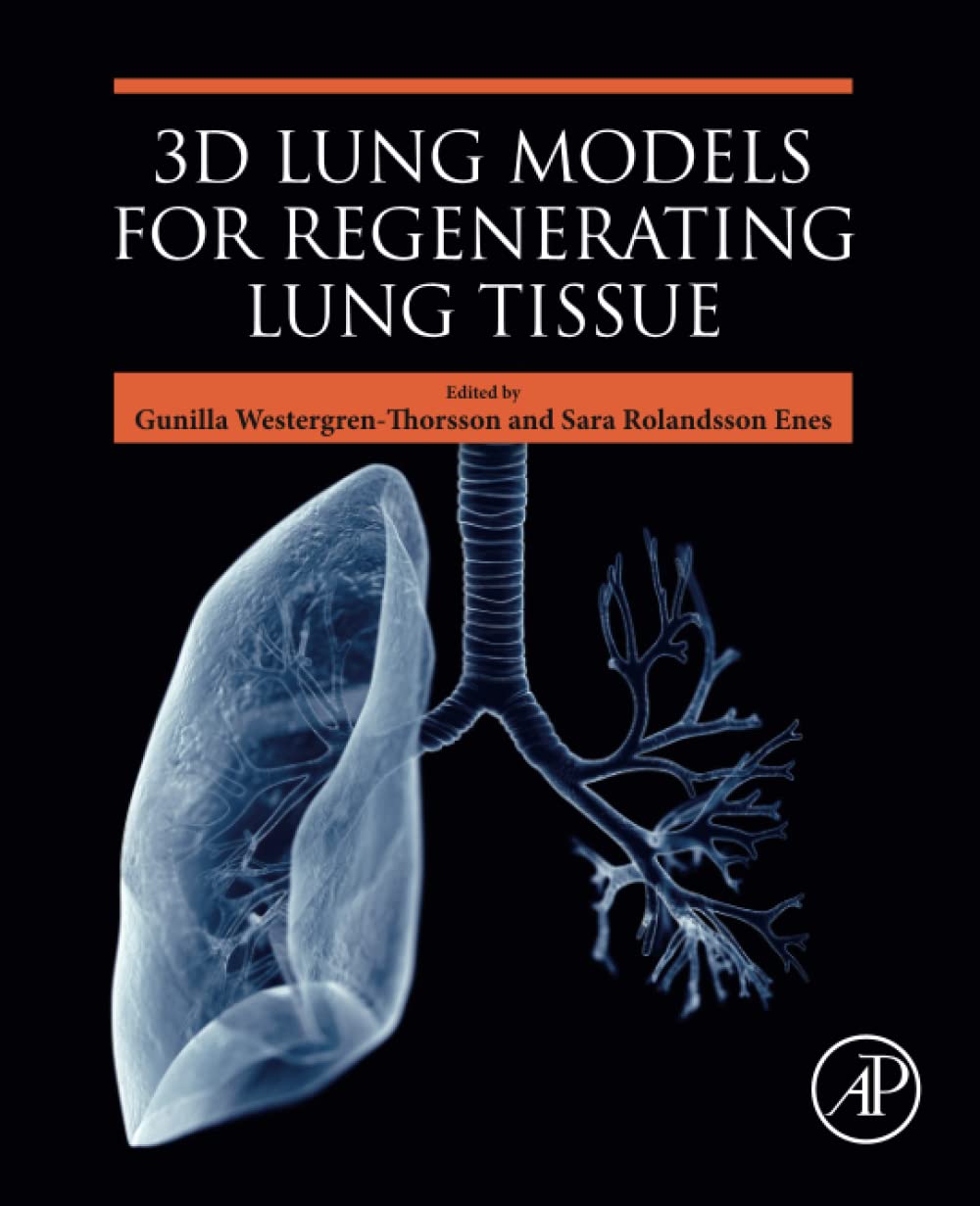
Product details:
ISBN-10 : 0323908721
ISBN-13 : 9780323908726
Author: Gunilla Westergren Thorsson, Sara Enes
3D Lung Models for Regenerating Lung Tissue is a comprehensive summary on the current state of art 3D lung models and novel techniques that can be used to regenerate lung tissue. Written by experts in the field, readers can expect to learn more about 3D lung models, novel techniques including bioprinting and advanced imaging techniques, as well as important knowledge about the complexity of the lung and its extracellular matrix composition.
3D Lung Models for Regenerating Lung Tissue 1st Table of contents:
Chapter 1. Is the lung a complex organ to rebuild?
Abstract
Overview: the form, function, and beauty of the lung
The mucus barrier and lung sentinel immunity
The trachea and upper airways
The airway epithelium
Spatial organization of integrated innate and adaptive immunity in the lung
The lung circulation
Gas exchange: the core job of the lungs
Bioengineering in the lungs is key to function
The lung lymphatics
Testing lung function
The lung microbiome in normal lung homeostasis
References
Part I: 2D culture and the microenvironment
Chapter 2. Two-dimensional cell culturing on glass and plastic: the past, the present, and the future
Abstract
Definition of two-dimensional cell culturing
Glass: the two-dimensional surface in the beginning of cell culturing
Glass: a two-dimensional surface used today
Plastic for two-dimensional cell culturing
Hydrophilicity, surface chemistry, and cell attachment
Cells in two dimensions and three dimensions in the body and relevance for two-dimensional cell culturing
The impact of switching between different kinds of surfaces and the role of medium composition
Conclusions
References
Chapter 3. The importance of lung microenvironment
Abstract
Introduction
Collagen and fibril formation
Supportive glycoproteins
Proteoglycans
Glycosaminoglycan structure and function
Microenvironments
Conclusions
References
Part II: 3D lung models
Chapter 4. The air–liquid interface model
Abstract
Introduction
Air–liquid interface models of the lung epithelium: what can we measure?
Single-cell RNA sequencing analysis of air–liquid interface–differentiated cell subtypes and states: how well do these represent the airway epithelium in vivo?
Recapitulation of epithelial phenotype in air–liquid interface cultures from asthma patients
Recapitulation of epithelial phenotype in air–liquid interface cultures from chronic obstructive pulmonary disease patients
Use of air–liquid interface culture to study effects of environmental insults: respiratory virus
Use of air–liquid interface culture to study effects of environmental insults: cigarette smoke
Use of air–liquid interface culture to study effects of environmental insults: air pollution
Concluding remarks
References
Chapter 5. Lung organoid models
Abstract
Introduction
Mouse lung organoids
Human adult lung organoids
Human lung organoids—embryonic
iPSC-derived lung organoids
Disease models using lung organoids: chronic lung diseases
Disease models using lung organoids: genetic lung diseases
Disease models using lung organoids: viral lung infections
Conclusion
Acknowledgments
References
Chapter 6. Biomaterials for in vitro models in lung research
Abstract
Introduction to biomaterials
Biomaterials for lung-related applications
Conclusions
Acknowledgment
References
Chapter 7. Three dimensional lung models – Three dimensional extracellular matrix models
Abstract
Introduction
Extracellular matrix changes in chronic lung diseases
Two-dimensional versus three-dimensional cell culture systems
Three-dimensional models—1: single-protein models
Three-dimensional models—2: extracellular matrix models with complex extracellular matrix mixtures
Challenges
Conclusions
References
Chapter 8. Lung-on-chip
Abstract
Introduction
Brief historical background of organ-on chip technology
Alveolus lung-on-chip models
Mimicking lung parenchymal diseases on-chip
Airway lung-on-chip models
Application of lung-on-chip disease models with a focus on regenerative medicine
Use of lung-on-chip models to study effects of environmental insults
Advantages and challenges of lung-on-chip technology
Concluding remarks
References
Chapter 9. Mechanical stimuli in lung regeneration
Abstract
Introduction
Stiffness of the cell microenvironment
Cell stretch
Cell shear stress
Microbioreactors for mechanically preconditioning lung cells
Mechanical stimuli in whole lung bioreactors
Conclusion
Funding
References
Part III: New directions
Chapter 10. Advanced manufacturing: three-dimensional printing and bioprinting of models of lung and airways
Abstract
Introduction
Design considerations for manufactured lung scaffolds
Biomaterials for manufacturing lung scaffolds
Manufacturing porous lung scaffolds
Manufacturing methods with true architecture control
Four-dimensional printing and responsive materials
Summary and future directions
Acknowledgments
References
Chapter 11. Drug screening and high throughput in three-dimensional lung models
Abstract
Introduction
The main difficulties associated with the identification of new pharmacological approaches
How three-dimensional models can help to overcome these problems
Concluding statements
References
Chapter 12. Model visualization: from micro to macro
Abstract
Model validation: from micro to macro
Light versus electron microscopy
Light microscopy across scales
Conclusion
Acknowledgments
References
Chapter 13. Artificial intelligence and computational modeling
Abstract
Introduction
Definition and history of artificial intelligence and machine learning
What is machine learning?
What is deep learning?
Machine learning in thoracic imaging
Applications of machine learning in pulmonary diseases
Challenges to further implementation of computer-aided diagnosis and radiomics
Conclusion
References
Part IV: Concluding remarks and future directions
Chapter 14. Challenges and opportunities for regenerating lung tissue using three-dimensional lung models
Abstract
People also search for 3D Lung Models for Regenerating Lung Tissue 1st:
how to regenerate lung tissue
3d lung models
3d lung model project
3d printed lung model
lung cancer 3d model
Tags:
3D Lung Models,Regenerating,Lung Tissue,Gunilla Westergren Thorsson,Sara Enes
You may also like…
Medicine - Oncology
Engineering
Demystifying Big Data, Machine Learning, and Deep Learning for Healthcare Analytics 1st edition
History - African History
Uncategorized
Developing the Digital Lung: From First Lung CT to Clinical AI 1st Edition John D. Newell
Uncategorized


